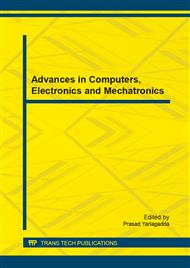p.41
p.50
p.55
p.60
p.64
p.68
p.72
p.76
p.81
An Improved Independent Component Analysis with Reference
Abstract:
Independent component analysis with reference is a general framework to incorporate a priori information of interesting source signal into the cost function as constrained terms to form an augmented Lagrange function, and utilizes Newton method to optimize the cost function. It can extract any interesting source signal without extracting all source signals comparing with the traditional Independent component analysis method. In this paper, to accelerate the convergence speed of the Independent component analysis with reference, two improved algorithms are presented. The new algorithms, firstly whiten the observed signals to avoid matrix inverse operation to reduce algorithm complexity, secondly use improved Newton method with fast convergence speed to optimize cost function,in the end deduce the improved Independent component analysis with reference algorithms. Simulation result demonstrates the new algorithms have faster convergence speed with smaller error compared with the original method.
Info:
Periodical:
Pages:
64-67
Citation:
Online since:
October 2014
Authors:
Price:
Сopyright:
© 2014 Trans Tech Publications Ltd. All Rights Reserved
Share:
Citation:


